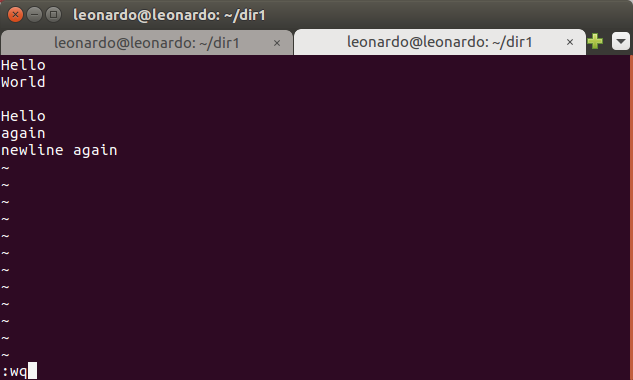

Just type vi followed by the name of the file. The technique for opening existing files is identical. This example assumes that you have the proper permissions to create files in the /jane directory.) (As you probably already know from your study of Linux or Unix, the above example can be performed regardless of where your current directory is on your system because the path for the command begins with a root directory, i.e. For example, to create and open a file named "apple" in the directory /home/jane/, type: New files can also be created in directories other than the current directory. In Linux this is merely a matter of convenience (or habit), and it generally makes no real difference for the file because it remains a plain text file in either case.

If you want, you could create the same file with an extension such as ".txt" added to the end of the file name. This creates a new file named "apple" in the current directory (the directory or folder which is currently open on your all-text screen or your terminal window). If Vim, the most popular clone, is installed in your system, the initial screen will have some text in the center that begins with something like "VIM - Vi IMproved." vi clones will be discussed in more detail in a later section.)Ī second way to open a new file is by typing vi followed by the name of the file to be created, for example: This is no problem, as the core commands of vi are also used in the clones. The reason is most likely that your computer is using a clone of vi instead of the real thing. (You might initially see something different than the nearly empty screen described above. This topic will be covered in the next chapter. Do not be concerned about trying to type any text into the screen yet (although you will probably want to).

You will notice that a (mostly) blank window opens after you type this command. This creates an empty file that will not have a name until you save its contents to disk (i.e., transfer the text you typed into it to your hard disk, floppy disk, etc. One is by just typing vi at the command line, like this: There are at least two ways to use vi to simultaneously create and open a new file. It can be convenient to add the icon for the terminal window to the launcher panel along the bottom of the screen, if it is not already there.) (In the case of Red Hat Linux, the terminal window can be opened by clicking on the icon of a red hat in the lower left hand corner of the screen, opening the System Tools menu and then selecting Terminal from that menu. A terminal window is a text-only window, and it can usually be opened by clicking on an icon (small image) of a computer screen. When it is in GUI mode (usually KDE or Gnome), vi runs in a terminal window. Vi can be used both when your system is in text mode (the entire screen is devoted to text and there are no images) and when your system is in GUI mode (the screen contains windows, images and menus).


 0 kommentar(er)
0 kommentar(er)
